In the summer of 2024, a photography workshop in Camargue, France, promised an experience that every photographer dreams of - a journey through a wild, untamed region where nature’s beauty is on full display. Camargue, located in the southernmost part of France, is where the Rhône River meets the Mediterranean Sea, creating a diverse landscape that has become a haven for photographers from around the world. This workshop was more than just an opportunity to hone photography skills; it was a chance to immerse oneself in the raw, natural beauty of a place where time slows down and every moment is a picture waiting to be captured.
Discovering the Wild Beauty of Camargue
Camargue is a place like no other, a region where the untamed beauty of nature is as diverse as it is breathtaking. As you traverse this extraordinary landscape, you are greeted by vast salt flats that shimmer under the sun, lush marshlands teeming with wildlife, and rugged coastlines that stretch as far as the eye can see. Every corner of Camargue offers a new perspective, a different story waiting to be told through the lens.
For photographers, Camargue is more than just a location; it’s an experience that engages all the senses. The iconic white horses of Camargue, known for their freedom and wild spirit, roam the wetlands, often framed by the soft hues of dawn or the dramatic colors of sunset. Capturing these majestic creatures in their natural habitat is a challenge and a joy, as their flowing manes and powerful presence provide endless opportunities for stunning action shots and intimate portraits.
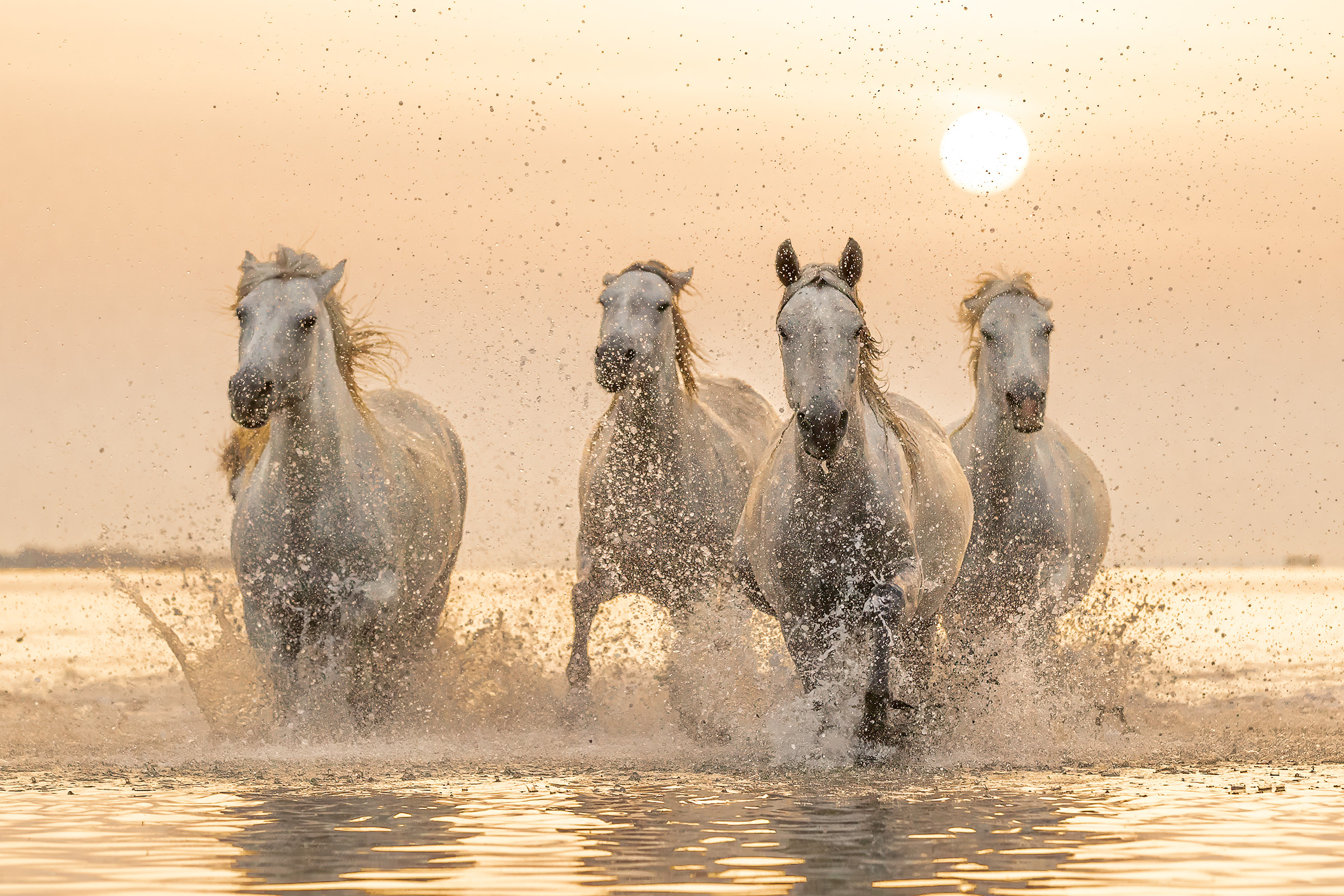
But Camargue is not just about horses. The region is also a paradise for birdwatchers and photographers alike. The vast colonies of flamingos that inhabit the area add a splash of vibrant pink against the deep blue of the lagoons, creating a visual symphony that is nothing short of mesmerizing. The sight of these elegant birds, often reflected perfectly in the still waters, is a reminder of nature’s delicate artistry and the beauty that can be found in the simplest of scenes.
The Light of Camargue: A Photographer’s Dream
One of the most captivating aspects of Camargue is its light. The ever-changing skies, from the soft pastels of dawn to the fiery reds of sunset, provide a constantly shifting backdrop that makes every photograph unique. The interplay of light and shadow across the varied landscapes - from the rugged coastlines to the serene marshes - offers a dynamic range of possibilities for both wide-angle shots and detailed close-ups.
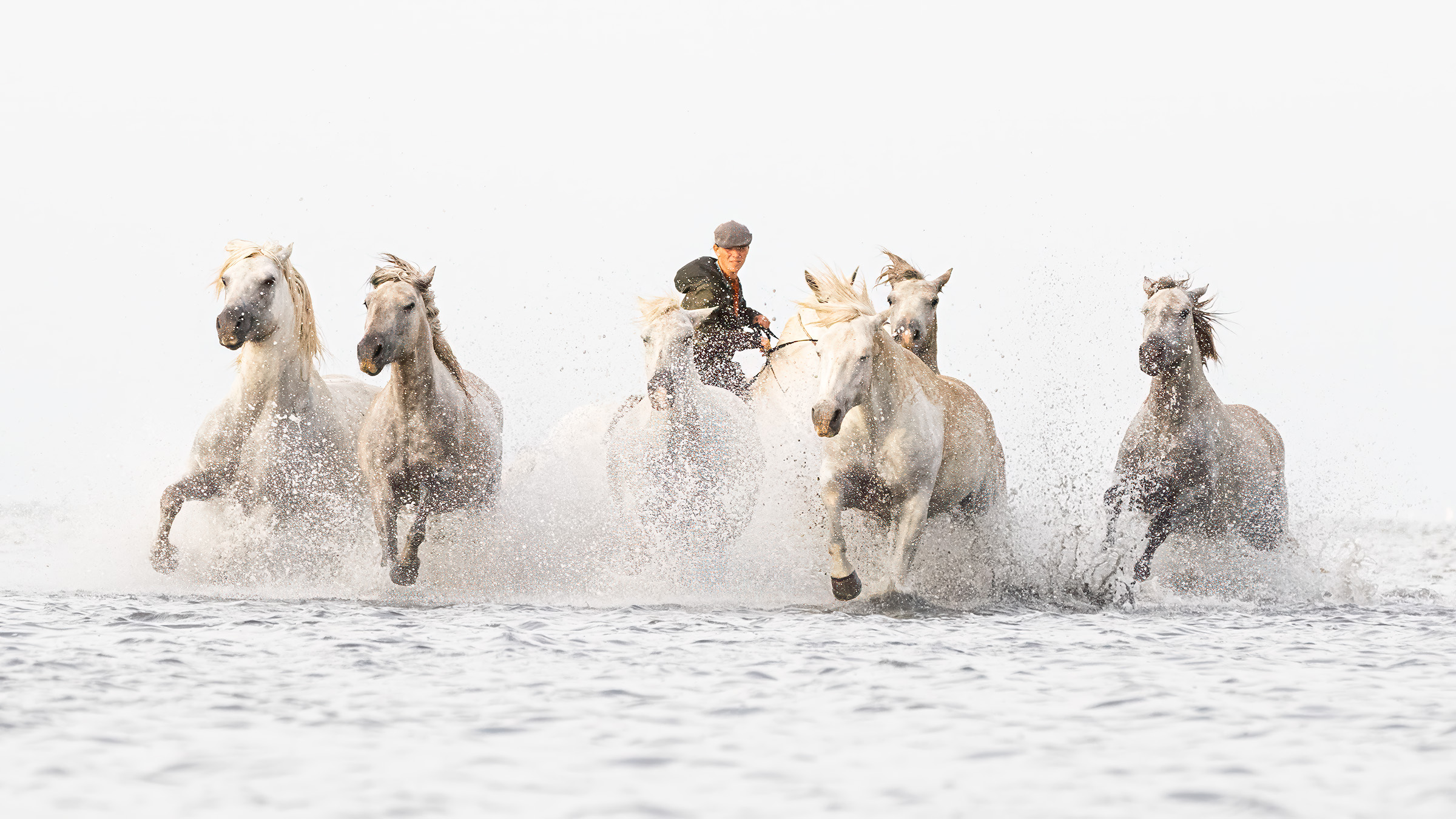
In Camargue, time seems to slow down, allowing you to fully immerse yourself in the art of photography. Whether you’re capturing the raw power of a galloping horse, the delicate grace of a flamingo taking flight, or the simple beauty of a sunset over the salt flats, Camargue offers a canvas that is as challenging as it is rewarding. It’s a place where nature’s wild heart beats strongly, waiting to be captured by those who are patient enough to see it.
Our Stay in Camargue: A Photographer’s Haven
Our accommodation was perfectly situated, right next to the entrance of the national park, a prime location for those eager to explore the natural beauty of Camargue. The convenience of staying so close to the park meant that we could easily walk there for our photography sessions, whether it was early in the morning or late in the evening.
The park’s entrance fee was incredibly affordable, ranging from just 5 to 8 EUR. And for those staying in our accommodation, there was even a discount on the ticket price, making it an even better deal. One of the unique features of the park is that if you purchase your ticket before 6 PM, when the ticket office closes, you can stay as long as you want, even overnight if you wish. This flexibility allowed us to maximize our time in the park, capturing the stunning beauty of Camargue at all hours of the day.
Our accommodation was well-equipped with everything we needed for a comfortable stay. The air conditioning provided relief from the summer heat, the beds were comfortable, and the kitchen had all the essentials for preparing meals. While breakfast was available on request, we found it to be rather basic and not worth the extra cost.
Five Days of Photography Bliss in Camargue
The workshop in Camargue lasted five days, with the first and last days reserved for evening and morning shoots, respectively. This schedule allowed us three full days of photography, plus two additional sessions that bookended the experience.
On the first evening, I didn’t fit into the riding group, so I took the opportunity to visit the Park and photograph flamingos at sunset. Capturing these elegant birds in the soft, golden light of the setting sun was nothing short of magical. The world seemed to pause as the flamingos waded gracefully through the water, their vibrant pink feathers contrasting beautifully with the orange and purple hues of the sky. The reflections of the birds shimmered on the water’s surface, creating a scene that was as serene as it was breathtaking.
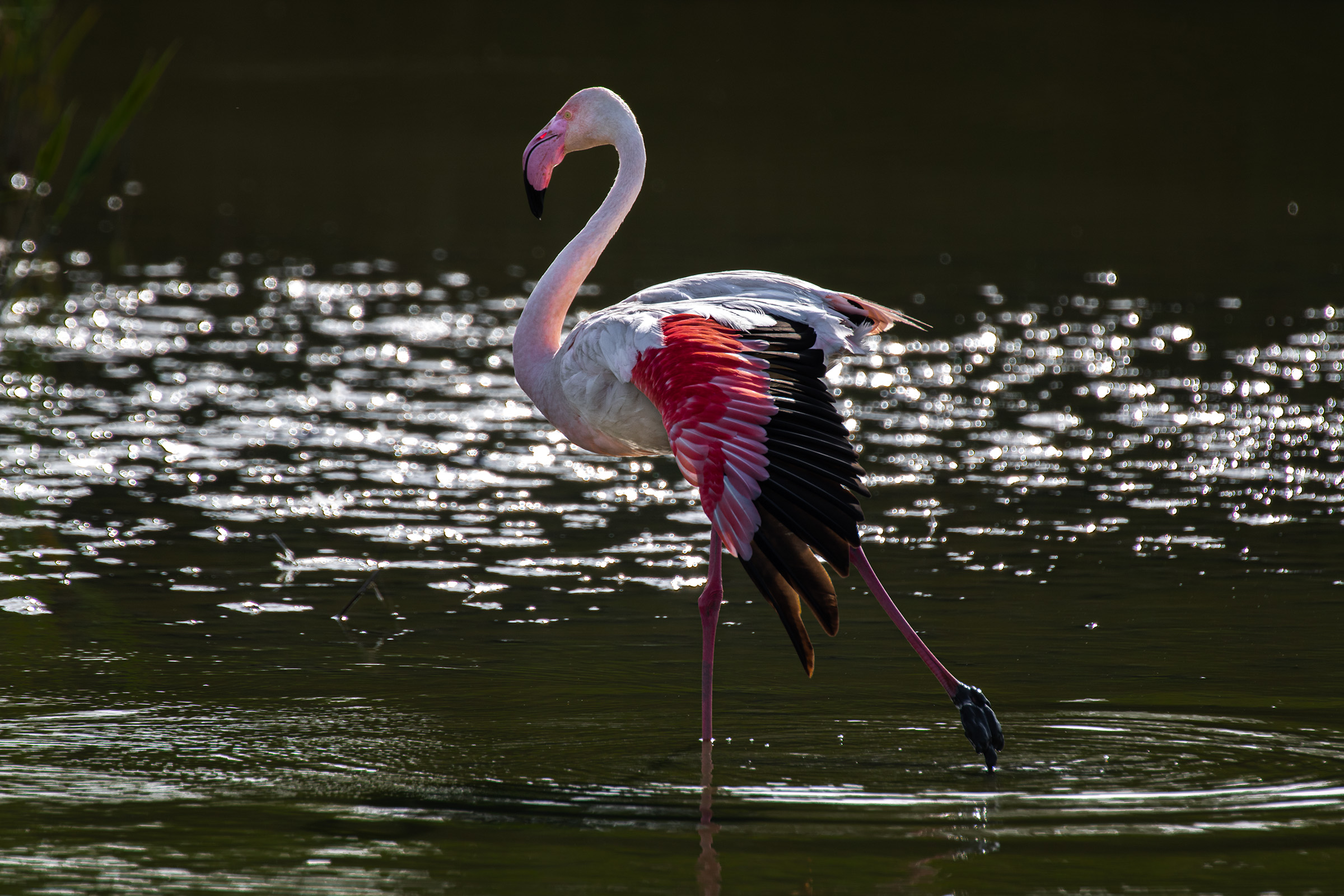
Photographing flamingos in backlight presented its own set of challenges. The intense glow of the sun behind the birds created dramatic silhouettes, but balancing exposure was tricky. The bright light could easily wash out details, turning the flamingos into mere shadows, while underexposing could result in a loss of the subtle hues of their feathers. The reflection of light on the water added another layer of complexity, often creating glare and unwanted reflections that distracted from the elegance of the scene. Yet, in these challenges lay the beauty of the moment—the delicate dance of light and shadow, where every shot was a fleeting chance to capture the grace of these birds in their natural, radiant splendor.
The Majesty of Camargue’s Horses at Dawn and Dusk
The first morning of the workshop in Camargue was dedicated to photographing the horses, an experience that is often described as the highlight of any visit to the region. As the sun began to rise, casting a soft, golden light across the landscape, we positioned ourselves on the banks of the wetland, cameras ready to capture the moment when the horses would come galloping towards us.

The light that morning was nearly perfect, illuminating the scene in a way that no other day could match. The horses, driven by their handlers, raced through the water, their powerful bodies creating splashes that caught the light and added drama to the scene. The rising sun, partially obscured by a layer of clouds, created a soft, diffused light that was ideal for photography. As the horses approached, they seemed to recognize us, pausing after each run to rest and allowing us to capture intimate portraits of these magnificent creatures.
Photographing horses in backlight at sunrise is not without its technical challenges. The fast pace of the action requires a high shutter speed - around 1/1500 to 1/2000 - while the low light levels at this time of day necessitate a higher ISO setting, often between 1600 and 3200. Despite these challenges, the results were breathtaking, with beautiful shots from the entire session. We also experimented with panning shots at the beginning of the session, capturing the motion of the horses as they galloped through the water.
Sunset provided a different set of lighting conditions for photographing the horses in Camargue. The golden light of the setting sun, coming from behind us, bathed the scene in a warm glow that highlighted the details of the horses’ bodies and the splashes of water around them. The ISO setting was slightly lower in the evening, around 800 to 1600, but the fast shutter speed was still necessary to freeze the action. The sunset session allowed us to capture high-key shots, where the bright, direct light created a striking contrast against the darkening sky.
A Unique Experience: The Bulls’ Run in Camargue
One evening, instead of photographing horses, we were treated to the sight of bulls running through the marshes at sunset. While the experience was extraordinary, the resulting photos didn’t quite match the beauty of the horse shots. Nevertheless, it was a unique experience that added another layer to our understanding of Camargue’s diverse wildlife.
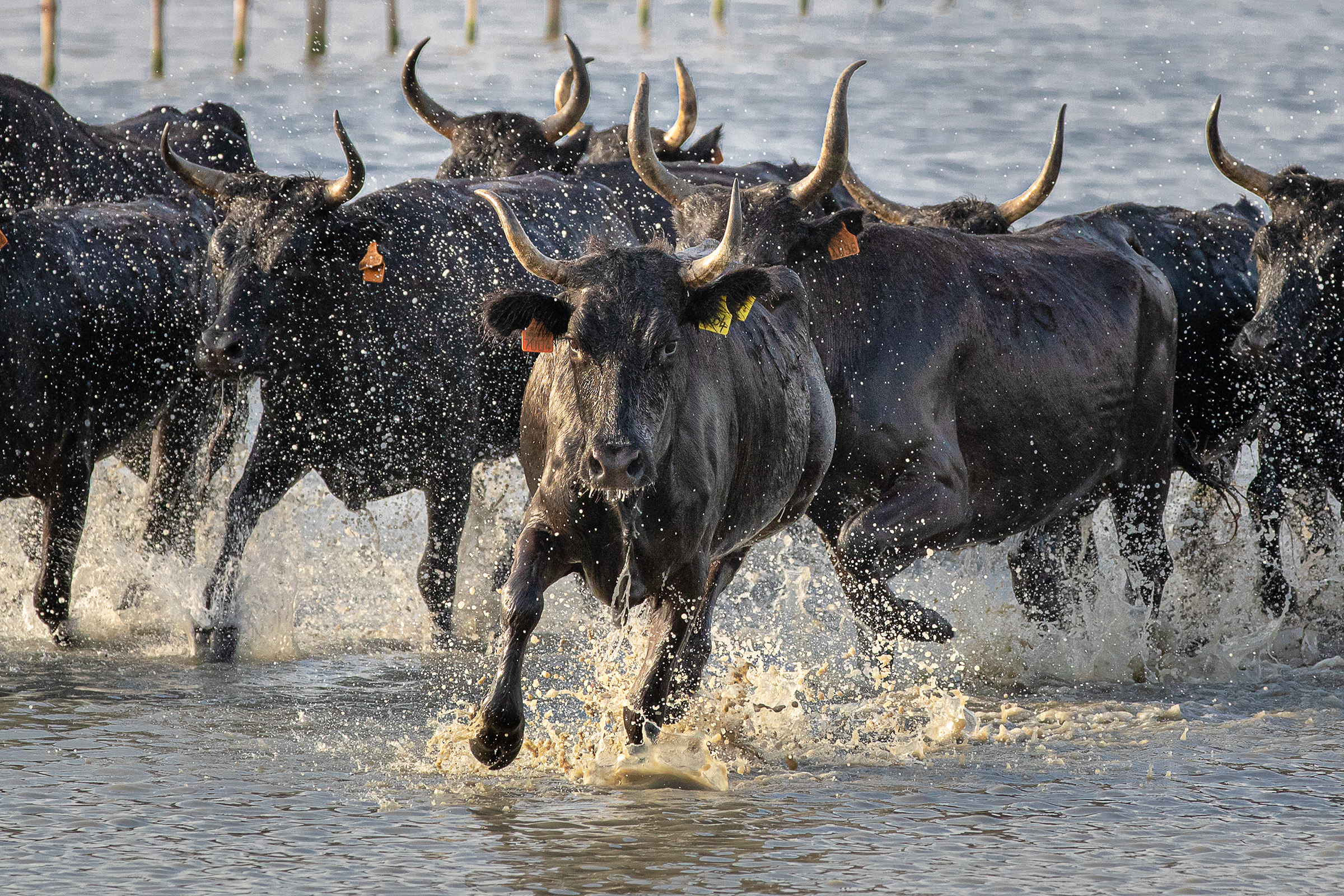
We were transported to the site by flatbed tractor and positioned ourselves on top of the flatbed to photograph the bulls as they ran through the marshes. Technically, photographing the bulls was similar to photographing the horses, but with black animals, it was important to avoid underexposing the scene, which could result in losing details in the shadows. By slightly overexposing, we were able to capture the rich textures and details of the bulls’ bodies as they moved through the water.
Exploring the Salt Harvesting of Camargue
The creation of sea salt is a delicate and timeless dance between nature and humanity, where the rhythms of the earth meet the patient hands of skilled salt workers. In vast, serene landscapes known as salt marshes or salt flats, the journey of sea water begins, guided by the gentle yet persistent forces of the sun and wind. Here, the water embarks on a transformation - an ancient ritual of evaporation that has been occurring for centuries.
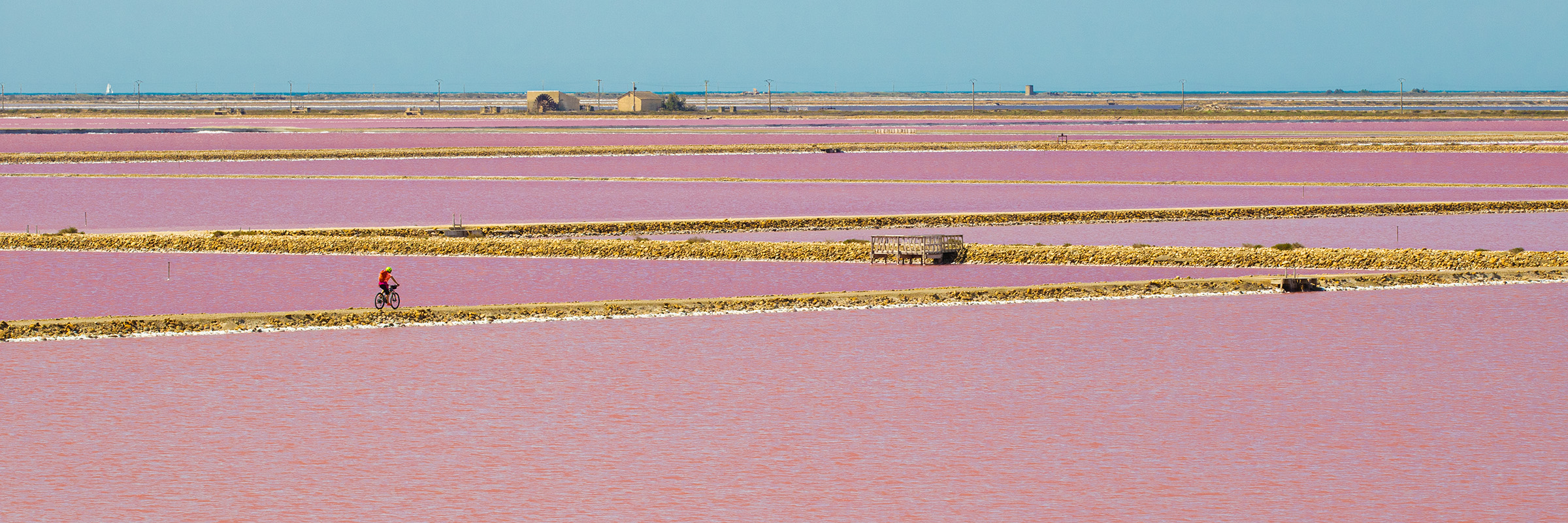
From March through August, salt workers engage in a mindful, almost meditative practice, ushering the sea water from pond to pond, encouraging its slow and steady concentration of salt. As the sun's warmth and the breeze's caress gradually draw away the water's freshness, what remains is a rich, briny solution that holds within it the very essence of the sea. This water, which has now lost nearly 90% of its fresh water content, takes on a deep, changing hue - a visual testament to the presence of Dunaliella Salina, a microalgae that not only nourishes the life around it but also adds its own touch of beauty to the process.
When the brine reaches its peak at a saturation of 360 grams per liter, the salt workers direct it to the crystallizing ponds. Under the relentless sun and the whispering wind, the final transformation occurs. The once fluid salt, hidden in the heart of the sea water, begins to solidify, descending to the pond's floor where it forms a thick, pure layer known as the “salt cake.” After months of patient crystallization, this ten-centimeter blanket of natural white salt is ready to be harvested, a moment that arrives each September.
The salt is then carefully collected, its journey from sea to table almost complete. Some of it is left in its coarse form, a rugged reflection of its origins, while other portions are finely ground, ready to be used in kitchens and homes across the world. And amidst this process, there is the Fleur de Sel - a delicate, precious salt that forms on the water's surface, harvested by hand at dawn. This moment, where the sun rises to greet the day, mirrors the timeless connection between humanity and nature, each crystal of salt a reminder of the sea’s gifts and the patient, skilled hands that bring them to life.
Conclusion
The Camargue Workshop 2024 was more than just a photography workshop; it was a journey into the heart of one of the most beautiful and untamed regions in the world. From the majestic white horses that roam the wetlands to the vibrant flamingos that grace the lagoons, every moment in Camargue was an opportunity to capture the beauty of nature in all its forms. The workshop challenged us to push the boundaries of our photography skills and rewarded us with stunning images that will serve as lasting memories of this extraordinary place.
Special Thanks
Special thanks go to the organizers and our instructors Tamás Imre and Anikó Imre from Fotooktatas.hu.
Let me invite you to watch this short video about my magical experience with these beautiful creatures (White Angels):
Go to Portfolio Camargue Horses
If you’re as captivated by this topic as I am, don’t miss out on exploring more insights in my other topics and contents in my Portfolio!

